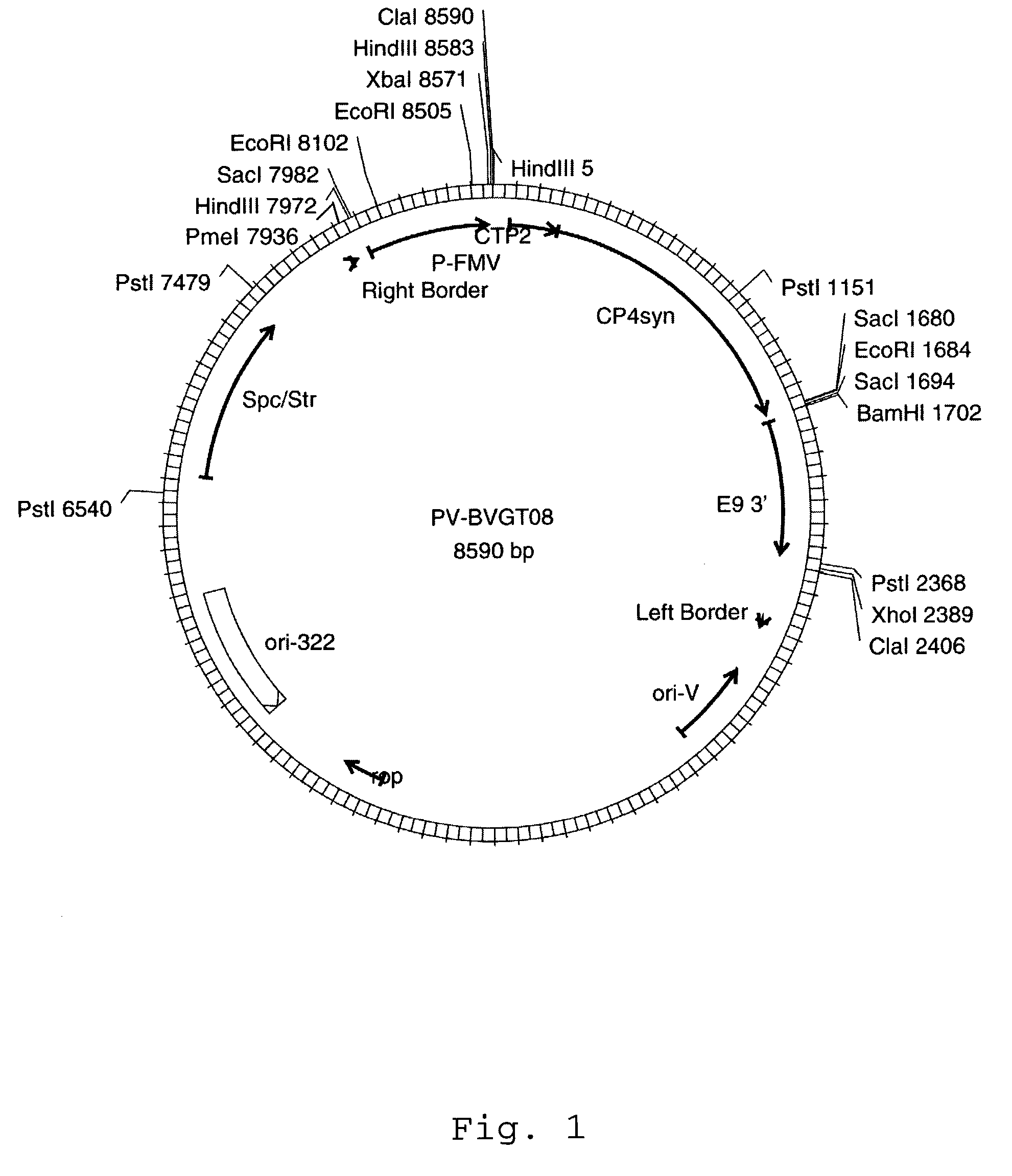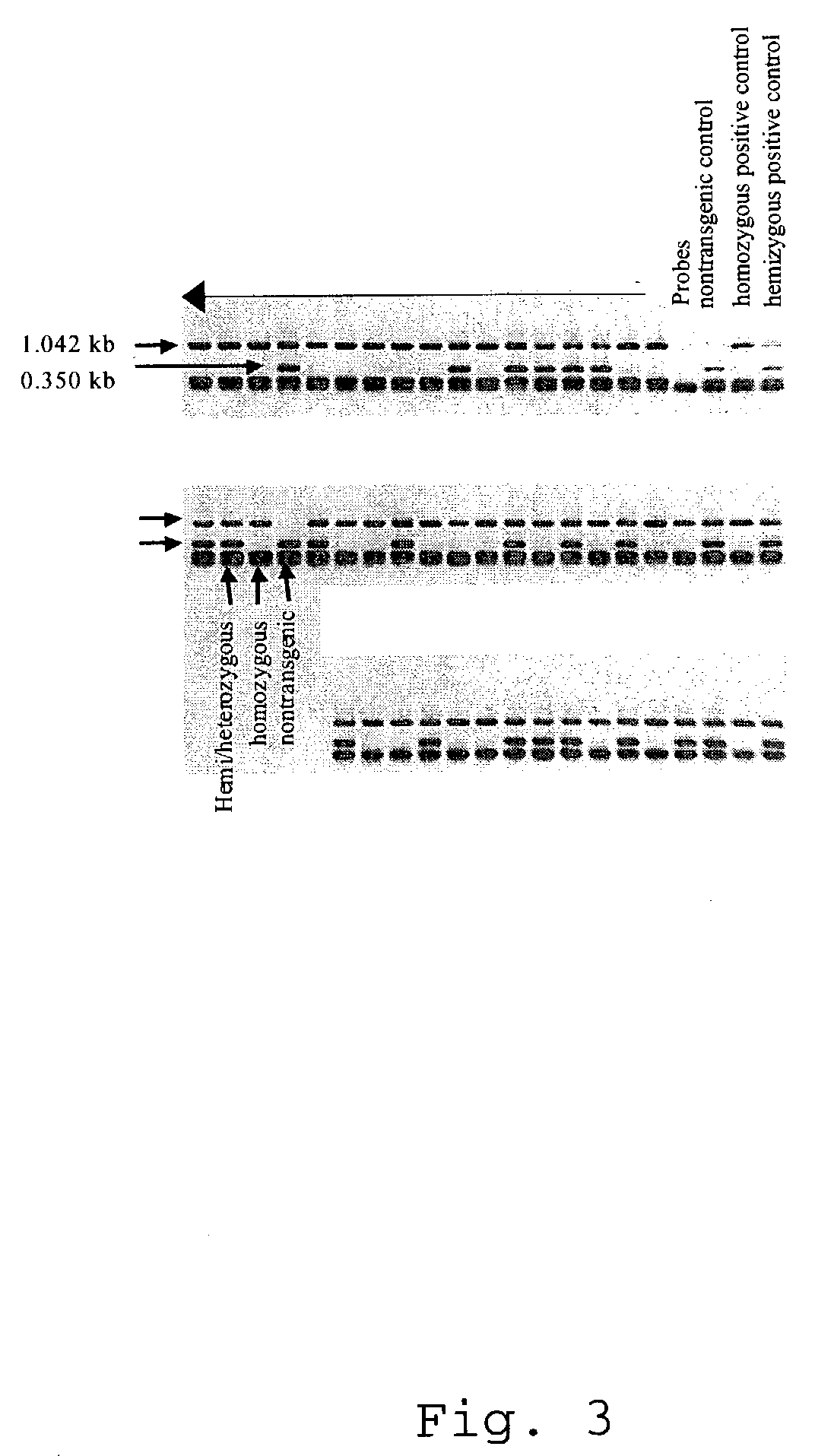Glyphosate tolerant sugar beet
a technology of glyphosate and sugar beet, which is applied in the field of glyphosate tolerant sugar beet plants, can solve the problems of time-consuming and cost-intensive procedures, and cannot guarantee the existence of satisfactory plants
- Summary
- Abstract
- Description
- Claims
- Application Information
AI Technical Summary
Benefits of technology
Problems solved by technology
Method used
Image
Examples
example 1
Identification of Event H7-1
[0040]Sugar beet (Beta vulgaris) genotype 3S0057 has been genetically modified to express a CP4-5-Enol-Pyruvyl-Shikimate-3-Phosphate Synthase or CP4-EPSPS, which confers tolerance to the herbicide glyphosate and is also used as a selectable marker. This transgenic line was produced by Agrobacterium-tumefaciens mediated transformation technology using the binary vector PV-BVGT08. The T-DNA of the vector used for sugar beet transformation contained between the left and the right border region the following sequences: a coding region composed of a chloroplast transit peptide coding sequence from the Arabidopsis thaliana EPSPS (designated ctp2) joined to the CP4-EPSPS coding sequence and under the regulation of the 35S Figwort mosaic virus promoter (pFMV) and the Pisum sativum rbcS-E9-gene 3′-transcriptional termination sequence.
[0041]The following methods were used:
I. DNA Extraction:
Method 1:
[0042]Fresh leaf or other tissue was collected (20 to 100 mg in a 1...
example 2
Characterization of Event H7-1
[0071]Molecular analysis was performed to characterize the integrated DNA present in the event H7-1. Specifically, the insert number (number of integration sites within the sugar beet genome), the copy number (the number of DNA fragments within one locus), the integrity of the inserted coding region and its regulatory elements, the pFMV promoter and E9-3′ transcriptional termination sequence, the absence of backbone sequences of the vector used for transformation and the stable inheritance of the insert were determined. Further, the sequences flanking the DNA insert were identified.
[0072]The inserted DNA of the sugar beet transformation event H7-1 was characterized by using Southern blot, PCR and Inverse-PCR techniques. Positive and negative controls (PV-BVGT08, non-transgenic plant DNA) were included and were treated in the same manner as the test substance (H7-1).
[0073]DNA was isolated from batch number 74903H of event H7-1 plants grown in 1997. DNA w...
PUM
| Property | Measurement | Unit |
|---|---|---|
| Temperature | aaaaa | aaaaa |
| Temperature | aaaaa | aaaaa |
| Temperature | aaaaa | aaaaa |
Abstract
Description
Claims
Application Information
 Login to View More
Login to View More - R&D
- Intellectual Property
- Life Sciences
- Materials
- Tech Scout
- Unparalleled Data Quality
- Higher Quality Content
- 60% Fewer Hallucinations
Browse by: Latest US Patents, China's latest patents, Technical Efficacy Thesaurus, Application Domain, Technology Topic, Popular Technical Reports.
© 2025 PatSnap. All rights reserved.Legal|Privacy policy|Modern Slavery Act Transparency Statement|Sitemap|About US| Contact US: help@patsnap.com



